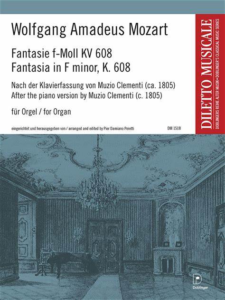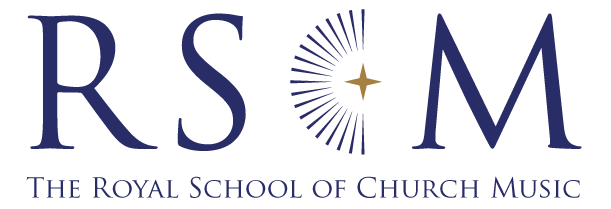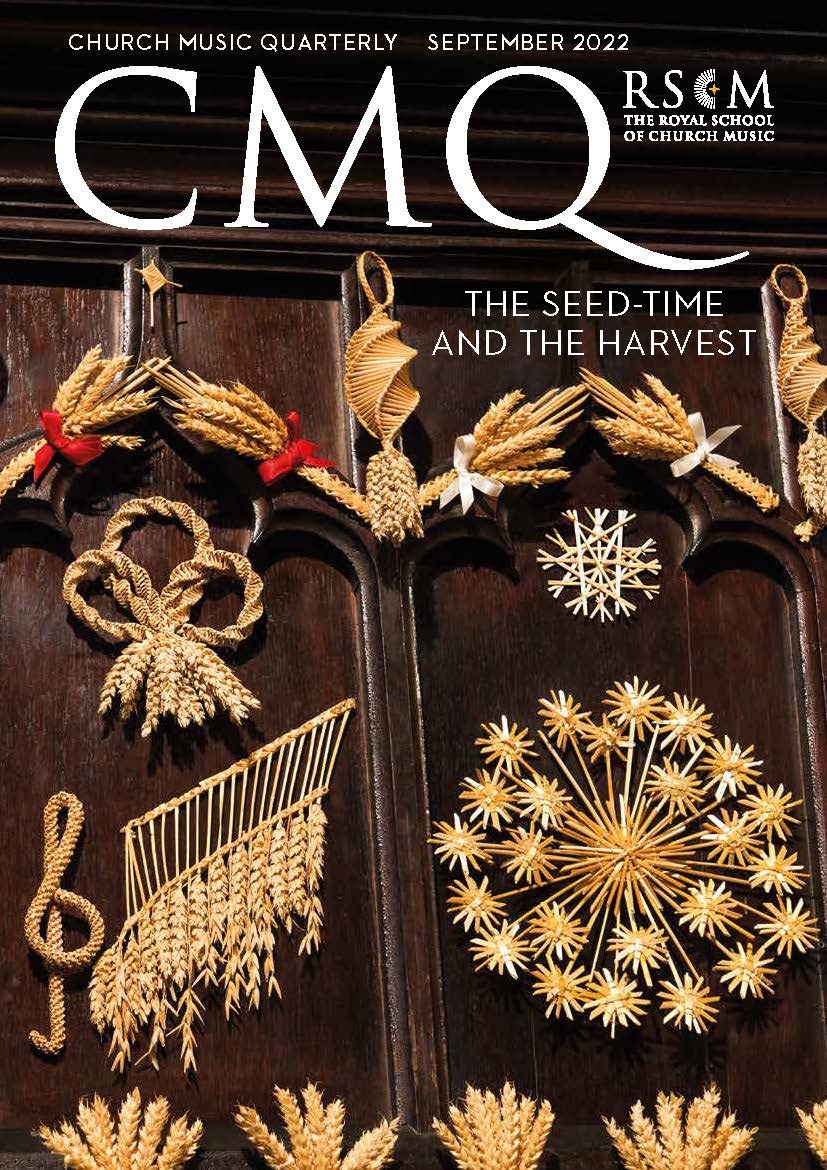
Reviews of CDs
* Worth hearing
** Recommended
*** Essential listening
ORGAN CDs
**
J.S. BACH FROM LINCOLN
Colin Walsh plays the organ of Lincoln Cathedral ♦ Priory PRCD1241
This is an attractive recital of some of Bach’s more popular organ works. The Toccata in C BWV 566a provides a spirited start to this recital. The tempo has been carefully chosen and allows the technical intricacies of the toccata to be heard. As with the Fugue in G minor, sometimes the right hand is just a little over-prominent, resulting in the left hand being slightly lost. The two Chorale Preludes on ‘Dies sind die heil’gen zehn Gebot’ BWV 678 and 69 are well played, if with a tempo rather on the slow side. The Trio in C minor BWV 585 is given a sympathetic performance in which the slow tempo and dotted rhythms of the Adagio give way to a spirited Allegro, where the rhythmical intricacies and the contrapuntal textures are especially clear. Colin Walsh has a 40-year association with Lincoln Cathedral and his mastery of its impressive Father Willis organ is never in doubt.
Ian Munro
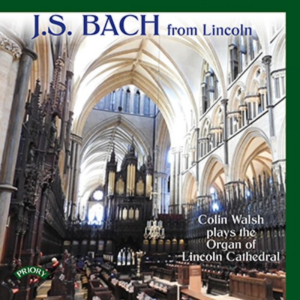
***
PROCESSIONAL: ORGAN MUSIC BY DOM SEBASTIAN WOLFF
Richard Lea plays the Ruffatti organ of Buckfast Abbey ♦ Ad Fontes AF007 (2-CD set)
Richard Lea, former organist at Buckfast Abbey, performs on these two CDs the organ works of Dom Sebastian Wolff, monk and former organist of Buckfast Abbey. The opening, triumphant Processional sounds as if it might have been written by Walton. A charming Chorale Partita on ‘Unto us is born a Son’ is a substantial reworking of this famous melody, allowing the various colours of the abbey organ to be heard in an intricate and intimate performance. The Fantasia and Fugue for organ, performed with gusto, contains a dotted motif reminiscent of Widor. Indeed Messiaen, Langlais and other French composers provided inspiration for Wolff. Carillon (Hommage à Mulet et Vierne) is distinctively French in terms of both the harmonies and organ timbres. The Chorale Prelude on ‘At the Lamb’s high feast’ is just one example of Wolff’s great contrapuntal prowess. The ethereal ending of Nocturne, with the organ fading away, is particularly impressive. Richard Lea’s respect and admiration of Wolff’s music is abundantly clear.
Ian Munro
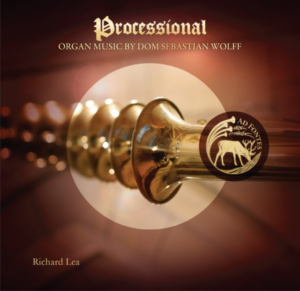
**
COLOURS OF THE COLLÉGIALE
David Hirst plays the 1897 Merklin and 2013 Cogez organs of the collegiate church of Notre-Dame de Mantes-la-Jolie ♦ Priory PRCD1244
This intriguing recital of music played by David Hirst showcases the two splendid organs of the Notre-Dame collegiate church to the west of Paris. The larger, historic Merklin grand organ is allowed to show off its power and might in the finale to Vierne’s first Organ Symphony. Gigout’s Toccata in B minor showcases Hirst’s nimble finger dexterity.
The smaller choir organ by Cogez can be heard in Bach’s transcription of Vivaldi’s Concerto in A minor for two violins and Bach’s Chorale Prelude on ‘Nun komm der Heiden Heiland’. This 2013 instrument is bright and loud, with the result that the music can lose its sense of intimacy. Both organs are featured in Boellmann’s Suite Gothique, mostly playing antiphonally although occasionally together (such as at the end of the third movement). It is an interesting idea that works surprisingly well.
Ian Munro
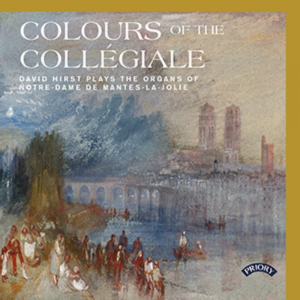
*
KARL HOYER’S UNBEATEN TRACKS
Graham Barber plays the Link/Gaida organ of the Pauluskirche, Ulm ♦ Fugue State Records FSRCD025
Karl Hoyer (1891–1936) was a pupil of Max Reger, writing in an approachable, late-Romantic idiom. There is an extensive worklist in John Henderson’s Directory, much of it little known. On this CD, the four-movement Memento mori! is a first recording, as is a posthumous Fantasy and Fugue on the chorale ‘Wunderbarer König’. Graham Barber controls the huge Link/Gaida organ of Ulm’s Pauluskirche, an instrument ideally conceived for the ripe impressionism of this sort of ‘orchestral’ organ repertoire. If you enjoy Karg-Elert’s organ writing, this CD could be a discovery – there is a taster on YouTube in the form of the Variations on a Sacred Folksong taken from this CD.
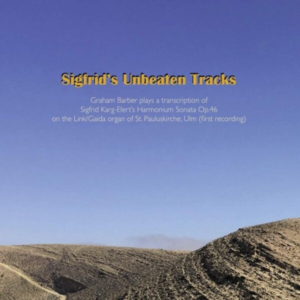
**
CHURCH BELLS BEYOND THE STARS
Norman Harper plays the organ of St George’s Metropolitan Cathedral, Southwark ♦ Signum SIGCD845
St George’s (Roman Catholic) Cathedral, Southwark, not to be confused with Southwark (Anglican) Cathedral, has a 1958 Compton ‘extension’ organ with 19 ranks of pipes furnishing 69 sounding stops on three manuals. Norman Harper, former director of music at St George’s, knows the instrument and acoustic, with the Swell speaking at 90 degrees to the (also enclosed) Great and Choir divisions. Recordings of the instrument are infrequent and these skilled performances of music from the late 20th and early 21st centuries are welcome.
There are three large-scale pieces based on plainchant. Peter Tranchell, whose centenary of birth is celebrated this year, wrote his Sonata for Peter le Huray, using the letters of his name and also, in the third and final movement, the plainchant Tu es Petrus with a rich harmonization: according to the liner notes, John Scott described one passage as ‘Alban Berg meets Ivor Novello’. The 20 minutes of Timothy Craig Harrison’s Christe qui lux es et dies follow the seven verses of the hymn (plus a final Amen ‘verse’), each including the complete melody. After a gentle start there are unexpectedly dramatic responses to the words, with striking registrations. Thomas Hyde’s Suite on plainchant themes has three movements, composed as separate pieces, concluding ‘Easter Alleluyas’ that includes the ‘Light of Christ’ chant and the dismissal ‘Go in the peace of Christ, Alleluia!’. The disc opens with Cecilia McDowall’s Church bells beyond the stars, a bravura performance of an exciting piece, and Alan Ridout’s Nativity Dances.
Judith Markwith
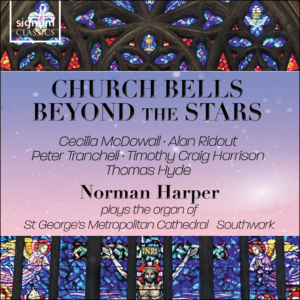
CHORAL CD
**
THE CANTICLE OF THE SUN
Charles Wood Singers / Philip Scriven (organ) / David Hill ♦ Regent REGCD567
A spirited, powerful and fast-moving Stanford Magnificat in B flat opens this impressive disc with the Charles Wood Singers under David Hill, recorded in St Patrick’s Church of Ireland Cathedral, Armagh. Clear vocal lines and an impeccable vocal blend are present throughout this disc. There are times where the vibrato might be a touch too much, particularly in solo sections. Stanford’s Eternal Father sung unaccompanied is sublime with incredible dynamic range. Philip Scriven provides sensitive organ accompaniments throughout. A selection of pieces by Charles Wood, which are all magnificently sung, begs the question of why his music isn’t more frequently heard. O Thou the central orb and Oculi omnium, very different in character, receive fabulous, committed performances. American Amy Beach rounds off the disc, with the Canticle of the Sun receiving its first recording in this version for choir and organ. A powerful work, it receives a fine and deeply moving performance by these young singers.
Ian Munro
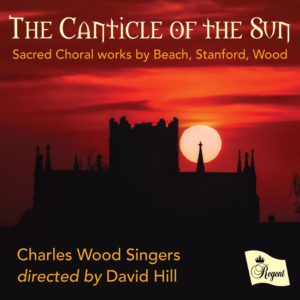
TAIZÉ
TAIZÉ: INSTRUMENTAL 4
Leon Bosch (clarinet) / Odile Torenbeek (viola) / Anna Marieke Zijlstra (oboe) / Paul van Utrecht (guitar) ♦ Taizé T705
The instrumentalists are four members of Netherlands Philharmonic Orchestra. There is guitar throughout; the other instrumental lines support the melody and provide variations, rather more prominently than on the first three instrumental albums (issued between 2003 and 2010). The 18 tracks include Oculi nostri, the canonic Veni Creator Spiritus and Eat this bread, are found in the published Jacques Berthier volumes. The other 15 are selected from more recent Taizé repertoire. All are straightforward, repetitive songs, or ‘ostinato responses’ as Taizé likes to call them. Most CMQ readers probably sing these chants unaccompanied or provide their own instrumental support, but for those wanting pre-recorded, off-the-peg accompaniments, this is a useful addition to the series.
Julian Elloway
BOOKS
MUSIC FOR OTHERS: CARE, JUSTICE, AND RELATIONAL ETHICS IN CHRISTIAN MUSIC
Nathan Myrick
OUP 155pp. PB 978-0-19-755063-2 £19.99
Music connects people – you only have to experience a football crowd to see that – but it can also alienate. It can draw people closer to God; it can also drive them away, at least from the worship of God. Unlike other books about music and worship or music and theology, this one concentrates on ethics and congregational music. It is not about lyrics, but about the role that music plays in relationships between people, more about connecting with each other than connecting with God. Indeed, God makes no appearance in the index, while ‘Worship’ gives a choice of ‘Worship, as manipulative’, ‘Worship, unjust’ and ‘Worship wars’! The argument seems to be that an ethically just relationship with God is something that results from having an ethically just relationship with other people. There is illuminating discussion of how congregational music may be ethical, such as by enabling human flourishing of every individual in a community – but most of what is written would equally apply to a secular community choir. Perhaps there is a point there – that we don’t apply the same ethical considerations in sacred music making as in the secular world, and we should.
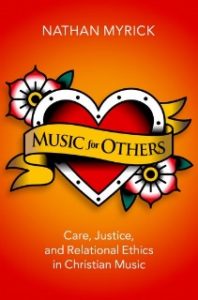
KNOWING THE SONG
Colin Gibson
The New Zealand Hymnbook Trust in association with Philip Garside Publishing Ltd 445pp. PB 978-1-98-857276-5 £24.99
The subtitle accurately describes the contents of this book: ‘A Companion to the Publications of the
New Zealand Hymnbook Trust from 1993 to 2009 together with the New Zealand Supplement to With One Voice (1982)’. It will interest New Zealand hymn singers with its well-informed and detailed coverage of published hymns in English and also in Maori and other Pacific languages (original or translated). But it has a wider function, documenting for people interested in hymnology, wherever they are, the exciting developments that have stemmed from New Zealand. Shirley Erena Murray and Colin Gibson himself are just two of the most widely exported names, but there is much more. Alleluia Aotearoa!
Julian Elloway
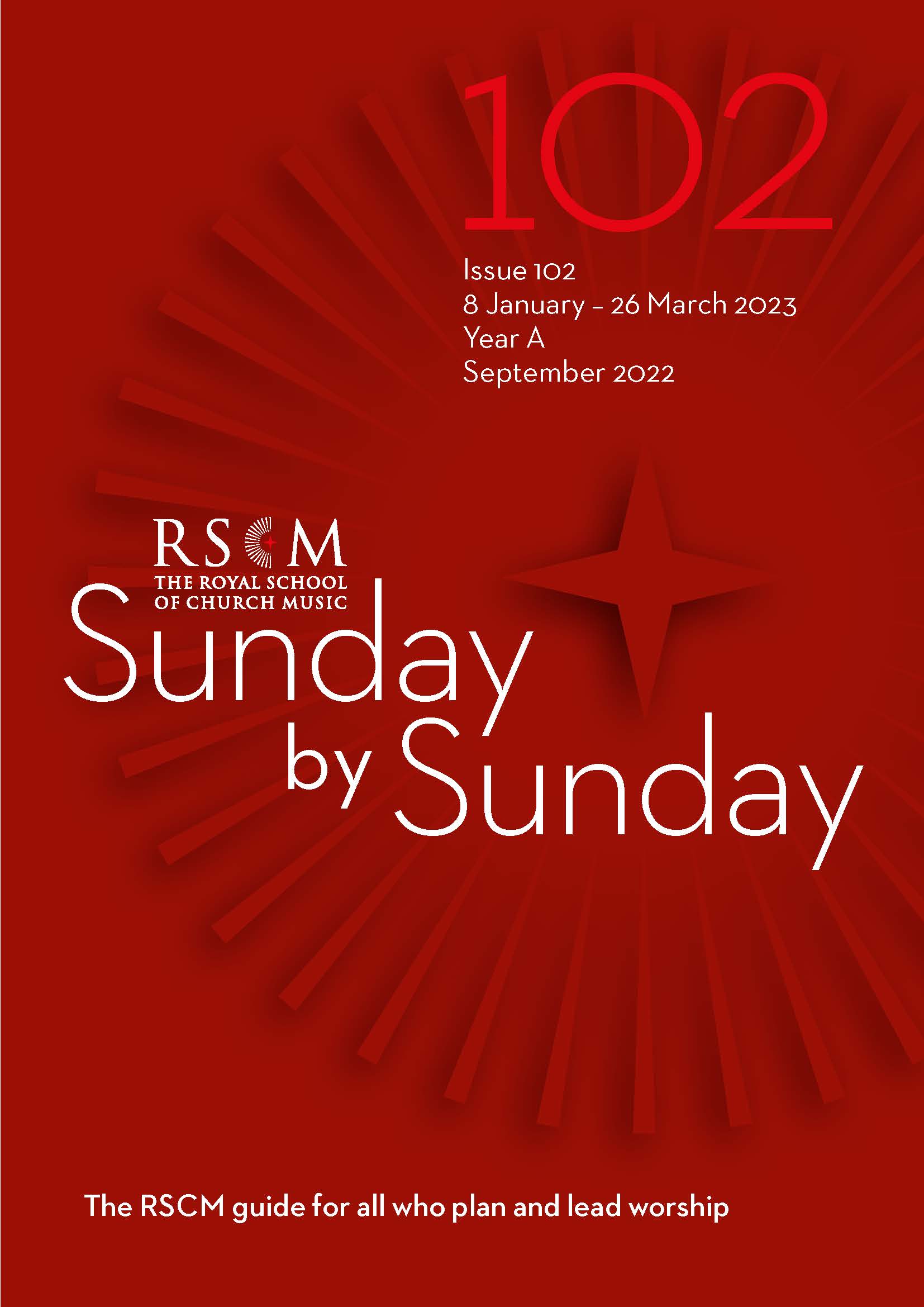
Reviews of printed music
CHORAL MUSIC
E Easy
M Medium
D Difficult
REMEMBRANCE
HOLY IS THE TRUE LIGHT [E/M]
Paul Drayton
SATB and organ
Banks Music Publications ECS609 £1.95
RUSSIAN CONTAKION FOR THE DEPARTED [E/M]
Kiev melody arr. Harry Bramma
SATBarB
Encore Publications 020679 £1.95
Paul Drayton’s ‘anthem for remembrance’ Holy is the true light provides an alternative for choirs wanting something easier to bring off than William Harris’s classic unaccompanied setting. It has well-shaped vocal lines, supported by an organ part that adds to the musical interest, for example at the climax starting ‘From Christ they inherit a home’, where it takes over the motif that the choir has previously used for the word ‘radiance’.
Harry Bramma harmonized the Russian Contakion for the Departed for SATBarB in 2003 for the choir of All Saints, Margaret Street. It has some refreshing departures from the familiar English Hymnal harmonies. An excellent YouTube performance by the choir of Trinity College, Cambridge (‘Sunday Evening Prayers … Sunday 24 January 2021’) is sung a minor third higher than in this newly published edition – a useful option if the bottom note of the basses is to be F rather than D.
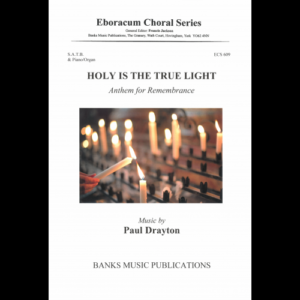
THE SOULS OF THE RIGHTEOUS [M]
Henry Walford Davies
SSAATTBB
Church Music Society RS145 £2.65
HOW ARE THE MIGHTY FALL’N [M]
Robert Ramsey ed. Joshua Stutter
SSATTB
Church Music Society RS152 £3.15
Walford Davies’s eight-part funeral anthem The souls of the righteous, written in memory of William Gladstone, receives its first publication. Gently affecting and effective, it does not deserve to have lain apparently unperformed since 1898.
We now have two octavo editions of Ramsey’s ‘sacred madrigal’ How are the mighty fallen, both transcribed from the same source and distributed by Oxford University Press, with a 10p price difference. John Milsom’s 1991 Tudor Church Music edition transposes the music up a semitone into an anachronistic-looking B flat minor and with note values halved to give a crotchet beat. Joshua Stutter’s new Church Music Society edition transposes it up a tone into B minor and retains original note values, with a minim pulse. As well as some differences in barring and interpretation of accidentals, Stutter has the advantage of a helpful introduction and critical commentary.
Julian Elloway
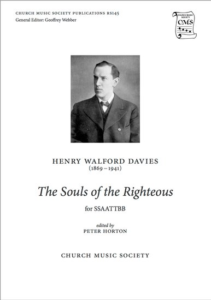
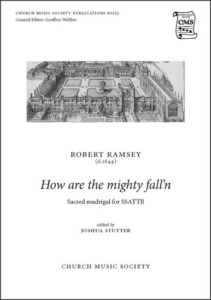
CHRISTMAS UPPER VOICES
WHILE SHEPHERDS WATCH’D THEIR FLOCKS BY NIGHT [E/M]
Jane Savage ed. Rachel Webber
Unison voices and organ
Church Music Society RS149 £2.65
I SING OF A MAIDEN [E]
JohN Rutter
Unison voices (or solo, or 2 parts) and keyboard
Oxford W219 £2.00
(SATB version X828 £2.25)
Jane Savage’s 1785 ‘Hymn for Christmas Day’ is a real discovery. An extended anthem for unison voices, it nevertheless divides its voices into solos and two choruses, each with a semichorus. The variety of treatment is always with charm and has dramatic moments. Rachel Webber’s fascinating introduction describes how it was written for the chapel of The Asylum for Female Orphans – such institutions providing musical opportunities for women and girls with music that required the same technical accomplishment as that for boys in traditional establishments.
Admirers of Patrick Hadley’s I sing of a maiden will enjoy John Rutter’s setting that has a similar ‘feel’, although with the climax delayed until ‘Well may such a lady’, making more of a contrast with ‘Goddes mother be’. There is much detail to enjoy, including the ‘falleth on the …’ falling thirds and the return of the opening vocal motif towards the end. An SATB and keyboard version is also available.
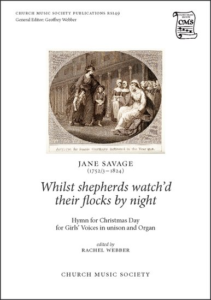
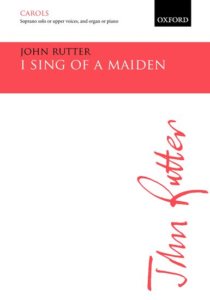
NOËL [M]
Charles Gounod ed. Geoffrey Webber
SA soli, SAA choir, piano, opt. organ/harmonium
Church Music Society RS148a £3.45
(SATB arrangement RS148b £3.45)
DING DONG! MERRILY ON HIGH [E/M]
arr. Olivia Sparkhall
SS (with divisions) and piano
Banks Music Publications KCS011 £1.95
HIS PRAISES WE’LL SING! [M]
David Blackwell
SSA and piano
Oxford W211 £2.65
(SATB version X760 £3.25)
Gounod’s Noël, written in 1866 for upper voices, became hugely popular after its first publication in English in a version for mixed choir. Geoffrey Webber has restored the original female choral scoring and piano accompaniment, with optional harmonium and organ reproduced separately at the end of the score. The original French is given, plus a new English translation. Separately available for purchase is a new SATB choral arrangement and, on the CMS website, Gounod’s soprano/alto duet version.
Ding dong! has a spritely arrangement by Olivia Sparkhall that will make an audience smile and be fun for a choir to learn. It really is ‘SS’ – both parts exchange musical material, including top G sharps.
David Blackwell’s His praises we’ll sing! is a bluesy setting of ‘Rejoice and be merry’ with a gospel feel to the piano part. Its energy will blow away any well-mannered setting of the words that you knew previously. An SATB version is also available for purchase, and an optional bass and drum kit part may be downloaded.
Stephen Patterson
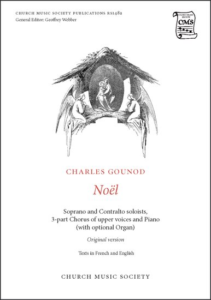
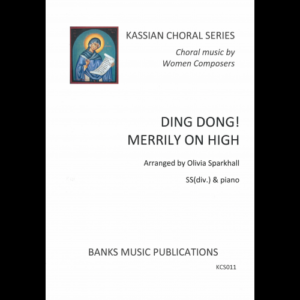
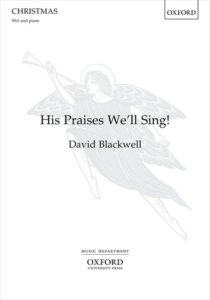
CHRISTMAS MIXED VOICES
THE CHERRY TREE CAROL [E]
COVENTRY CAROL ON A GROUND [E]
REMEMBER, O THOU MAN (ON A GROUND) [E]
DING DONG! MERRILY ON HIGH [M/D]
arr. June Nixon
SATB and organ
Encore Publications £2.55 each
The first three of these carol arrangements feature straightforward choral arrangements, with each verse in four-part harmony or unison and with consistent harmonies making them easy to learn. The interest and variety lie in the organ parts that illustrate the words of each verse. Ding dong! merrily on high, by contrast, swings along in 6/8 with much syncopation and variety of texture (including some divisi for sopranos and basses). The organ has the subservient role while the choir sings ‘merrily on high’ – enjoyable for singers and audience.
TWO CAROLS OF THE NATIVITY [E–E/M]
AlAn Spedding ed. Paul Dewhurst
SATB and organ; SATB
Banks Music Publications ECS614 £1.95
Alan Spedding, former director of music at Beverley Minster, died in 2014. He was better known for his organ compositions, but these two Christmas pieces show his skill at writing for voices, with a genuine carol-like feeling. The unaccompanied Puer natus in Bethlehem contrasts different choral textures, including an ‘ATB Verse’. I saw a maiden is also unaccompanied when the voices are singing (until optional accompaniment in the final verse), but with contrasted organ interludes.
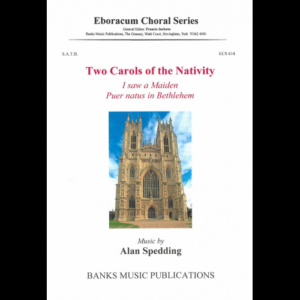
CRADLE SONG [M]
SILENT NIGHT [E]
Bob Chilcott
SATB; SATB and organ
Oxford BC241 £2.65; BC239 £1.95
If the flowing melody of Bob Chilcott’s Cradle Song (words by William Blake) seems to resonate with other Christmas music, the reason becomes clear in the fourth verse when a semichorus or congregation enters with ‘Away in a manger’ and the Kirkpatrick tune proves to be an effective countermelody. I would like to hear this with an adult SATB choir joined by children singing the ‘Away in a manger’ line. Chilcott’s arrangement of Grüber’s Silent Night has a unison plus organ verse, followed by SATB unaccompanied and then a well-supported descant verse that leads to ‘Jesus, Lord, at thy birth’.
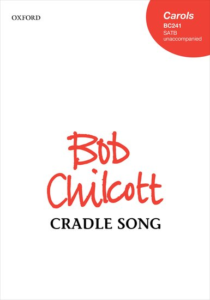
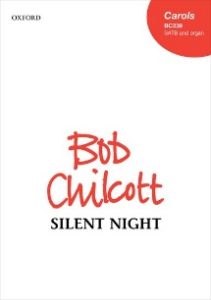
ON CHRISTMAS DAY [D]
Simon Preston
S solo, SATB and organ
Encore Publications 020687 £2.95
QUEM VIDISTIS, PASTORES [D]
Richard Elfyn Jones
SATB with divisi
Encore Publications 020682 £2.50
If Simon Preston’s death earlier this year suggests programming more performances of his music, On Christmas Day would be an excellent choice for a Christmas service – by those choirs able to bring it off. In fact it is not as tricky as it looks and much of the four-part writing is in two parts, doubled at the octave. Setting Gerard Manley Hopkins, it is the only Christmas anthem I can think of that includes the Dies Irae melody (at the words ‘Moonless darkness stands between’).
Welsh composer Richard Elfyn Jones, formerly Senior Lecturer in Music at Cardiff University, uses a rich harmonic language to evoke the shepherds as they proclaim how they have seen the birth of Christ. There are echoes of Kodàly, but with more chromaticism that effectively depicts the other-worldly glory of the new-born babe and choirs of angels.
BALULALOW [M]
Paul J. Smith
SATB
Banks Music Publications GCL042 £1.75
SLEEP SOFTLY NOW [E]
Ian Assersohn
SATB
Oxford X814 £2.20
Admirers of Warlock’s ‘Christmas lullaby’ Balulalow should enjoy Paul J. Smith’s setting of the same 16th-century text that has a similar triple-time, rocking feeling and sometimes a similar musical language. Ian Assersohn sets an even earlier, 15th-century lullaby text with a wordless first verse and then the two surviving verses of words. The title, Sleep softly now, comes from the end of the refrain, which has a simple but haunting musical setting.
LO! HE SLUMBERS IN HIS MANGER [M]
A CHRISTMAS CAROL [M/D]
Cecilia McDowall
SATB; SATB and organ
Oxford X781 £2.00; NH260 £2.55
Cecilia McDowall’s Lo! he slumbers in his manger is the most beautiful of the various Christmas lullabies covered in this set of reviews, and with the bonus of inner parts that are shaped as carefully as the tune and are gratifying to sing. The melody of A Christmas Carol has a timeless quality that supports a range of harmonies and countermelodies, all taking their cue from a Chesterton poem that depicts the growth of the child Jesus, initially lying on Mary’s lap through to standing at her knee. A simple rising scalic pattern accompanies images of Christ’s hair but, when inverted, can evoke the weary world or stern and cunning kings. An underlying F minor tonality hints at what is to come.
MISSA NATIVITATIS DOMINI [M]
June Nixon
SATB and organ
Encore Publications 20694 £2.95
Twelve mostly well-known carols (some appearing in two different places) provide the musical material of this Christmas Mass setting with Latin text. If the Gloria shows signs of a bit of a struggle to fit words to tunes (parts of seven different tunes are used), the shorter movements are highly successful, especially a ‘Ding dong! merrily’ Sanctus and a lovely Agnus Dei to ‘Whence is that goodly fragrance flowing?’. The choral writing is mostly straightforward; the organ part is fun to play.
James L. Montgomery
EPIPHANY UPPER VOICES
STAR OF THE EAST [E/M]
Michael Higgins
SS or unison and piano
Oxford W215 £2.20
THE DESERT [M]
Emma Mundella arr. Olivia Sparkhall
SSA and piano
Banks Music Publications KCS015 £1.95
Michael Higgins evokes the star with a busy, glittering piano part. Voices sing an easily learnt melody in unison and optionally two-part harmony and as a canon. The text, by the 19th-century American ‘poet of childhood’ Eugene Field, may seem a bit twee nowadays, but the piece could work well in a school Christmas concert.
Olivia Sparkhall’s Kassian Choral Series provides excellent upper-voice repertoire, although, as has been noted here before, it is a pity that the published scores have no information about the original music and in what ways it has been arranged and adapted. Emma Mundella (1858–96) was a composer, pianist, organist, choral conductor, school music teacher and hymn book editor. Her setting of The Desert shows a skilful balance of major and minor tonalities as it depicts the ‘silence, loneliness and night’ in the desert, above which the star leads the travellers to the Saviour. It is a lovely Epiphany anthem.
Stephen Patterson
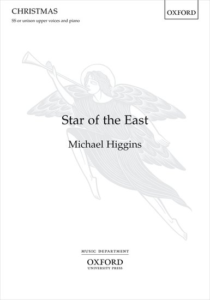
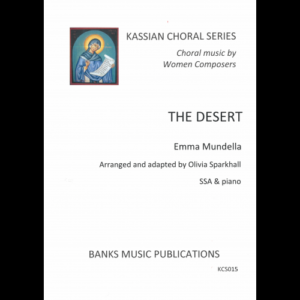
EPIPHANY MIXED VOICES
THE JOURNEY [E]
WHAT CHILD IS THIS? [E/M]
Malcolm Archer
SATB; SATB and organ
Encore Publications £1.95; £2.50
The Journey is as straightforward as it could be, with three of the four unaccompanied verses repeating the same harmonization and one verse with the parts rearranged so that the tune is given to the tenors. The music grows through each extended final phrase – needed for the unusual 8.8.8.10 metre – and shows craftmanship and sensitivity. The rather less inspired words, describing the journey of the Magi, are also by the composer. What child is this? is given an attractive new tune that is not diminished by any comparison with Greensleeves. The varied musical treatment of each verse responds to the question-and-answer format of Dix’s poem, leading to a joyful final verse with a strong climax – it is a well-recommended new anthem for Epiphany.
AB ORIENTE VENERUNT MAGI [M/D]
Jan Pieterszoon Sweelinck ed. Patrick Russill
SSATB and optional organ
Church Music Society RS143 £3.45
Sweelinck’s music vividly depicts the journey of the Magi from the east and their adoration of Jesus at Bethlehem, followed, in its secunda pars, by their prophetic gifts of gold, frankincense and myrrh. The work concludes with an abundance of alleluias, the extravagance of which perhaps reflects that of the gifts. A keyboard reduction is provided, but Patrick Russill, in his excellent introduction, emphasizes that the organ, if used, should reinforce polyphony, rhythms and changes of texture and not simply double the voices.
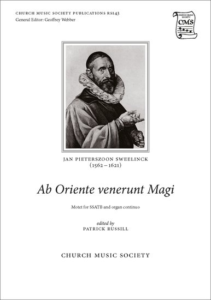
STAR OF WONDER [E]
Alan Bullard
SATB and keyboard
Oxford X789 £2.25
(SABar arrangement SAB8 £2.25)
EASTERN MONARCHS [M]
arr. June Nixon
SATB and organ (optional drum)
Encore Publications 20692 £2.50
Originally published as a flexibly scored anthem, Alan Bullard has rearranged Star of wonder in fixed versions for SATB and SABar. The use of different soloists or a small group of singers for the central verses is encouraged. Writing in a minor key for the verses and major for the chorus follows J.H. Hopkins’s precedent, but for the final verse Bullard temporarily swerves into the major for ‘Glorious now, behold him arise’, with exciting effect.
In Eastern monarchs, June Nixon couples an English translation of Latin 15th-century words with a Swedish folk tune, in a setting accompanied by organ and, optionally, Arabian drum. This cultural mixture is remarkably successful. The folk tune, sung by the choir, has a carol-like lilt; the organ part features what sound like north African inflections, which feel at home with the optional drum part. It is an Epiphany carol with a difference!
James L. Montgomery
BACH CHORALES
COMPLETE CHORALES FOR FOUR-PART MIXED CHOIR [E]
J.S. Bach ed. Thomas Daniel
SATB
Breitkopf & Härtel ChB 5377 €19.90
Many of us grew up with what was simply called ‘Riemenschneider’ – his 1941 collection of 371 harmonized chorales and 69 figured bass chorale melodies – to help teach us Bach harmonization. Thomas Daniel has produced a similar collection of the harmonized chorales, although now with 396 items. More importantly, Daniel interlines a stanza of text and, where necessary, separates out the lines on more than two staves and also provides obligato instrumental lines, all because this is an edition to be performed as well as studied.
The first part of the volume has 198 chorales from Bach’s surviving choral works, grouped (unlike Riemenschneider) alphabetically by chorale title. The second part has a further 196 chorale settings taken from chorale collections that were, at least at one time, attributed to Bach. These lack any text in their sources, but a sung stanza has been supplied editorially. Indexes cover the chorale titles, text incipits, BWV numbers, composers of melodies and authors of texts.
Julian Elloway
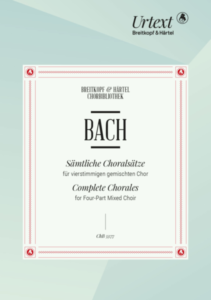
ORGAN MUSIC
E Easy
M Medium
D Difficult
MANUALS ONLY
EIGHT LITTLE PRELUDES AND FUGUES [M]
J.S. Bach arr. Tobias Zuleger
Butz-Verlag BU2999 €14.00
Tobias Zuleger offers yet another edition of the legendary Eight short Preludes and Fugues BWV553–60 attributed to Bach in the only surviving manuscript source, but with numerous candidates proposed as the likely composer. This time they are arranged for manuals only, integrating the pedal part into the left-hand part of the score, occasionally making adaptations to avoid impossible stretches or accommodate pedal solos, but sometimes losing depth.
The arrangements are skilfully done, but the target audience must surely be rather small. However, as well as use on organs lacking a pedalboard in village churches and elsewhere, this edition would be suitable for the ‘reluctant organist’ who cannot play the pedals but has a reasonably developed manuals technique. It is clearly printed, with the short introduction available in English. One additional value could be for teaching players to read an unmarked pedal part from two staves, as is sometimes found in manuscripts of Buxtehude, J.S. Bach and their contemporaries.
John Collins
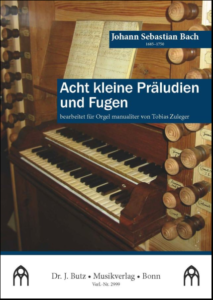
CHRISTMAS ORGAN MUSIC
TOCCATA FESTIVA ON ‘HARK! THE HERALD-ANGELS SING’ [D]
Richard Elfyn Jones
Encore Publications 010033 £6.95
Unlike other toccata-like treatments of Adeste, fideles, here snippets of the tune are heard from time to time, often distorted but clear enough for a Christmas congregation to recognize that it is ‘Hark the herald’. The Toccata is certainly festive; it is also difficult! For organists with the technique (and time to learn a new piece for Christmas), Richard Elfyn Jones has written a moto perpetuo that will excite a congregation or audience.
Duncan Watkins
MECHANICAL MOZART
FANTASIA IN F MINOR K. 608 [D]
Wolfgang Amadeus Mozart arr. Pier Damiano Peretti
after the piano version by Muzio Clementi
Doblinger DM1518 £16.50
Mozart’s three works for ‘Flötenuhr’ or ‘Orgelwalze’ are renowned for their musical charm, but also their sheer complexity. They were composed for instruments in the famous wax museum of Count Joseph Deym von Střítež in the centre of Vienna and were never meant to be played by human hands. Over the centuries, the two larger works (K.594 and K.608) have been published in symphonic arrangements, as well as versions that are more sympathetic to historically informed performance practice. In this new edition by Pier Damiano Peretti, a third option for K.608 is presented.
In c.1805, Muzio Clementi published a version for piano solo, in which he claims to have worked from the original manuscript (now lost). In Clementi’s performing version, he widens the original range, reworks the overture sections into a more transparent texture, and transforms Mozart’s turns in parallel thirds into simple turns. He also introduces some compositional retouching, which was common during the 19th century. This new adaptation for organ is a fine alternative to the other versions that are already in print, and Peretti is quite clear that, while he hopes to nudge the music a little closer to the composer’s original intentions, performers should not necessarily be limited by Clementi’s own interpretation and should be open to introducing their own specific amendments.
Richard Brasier
